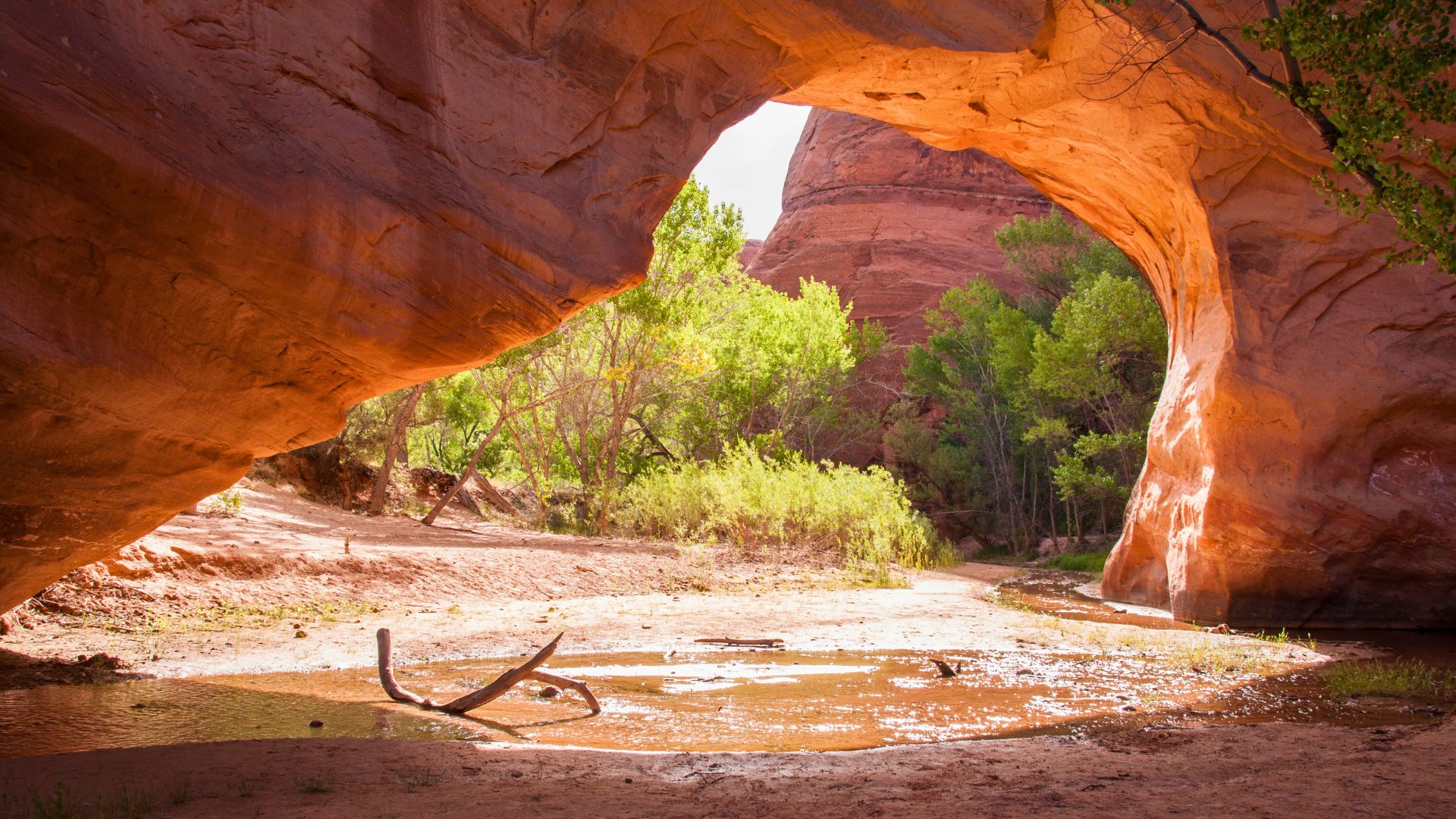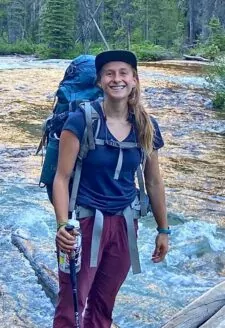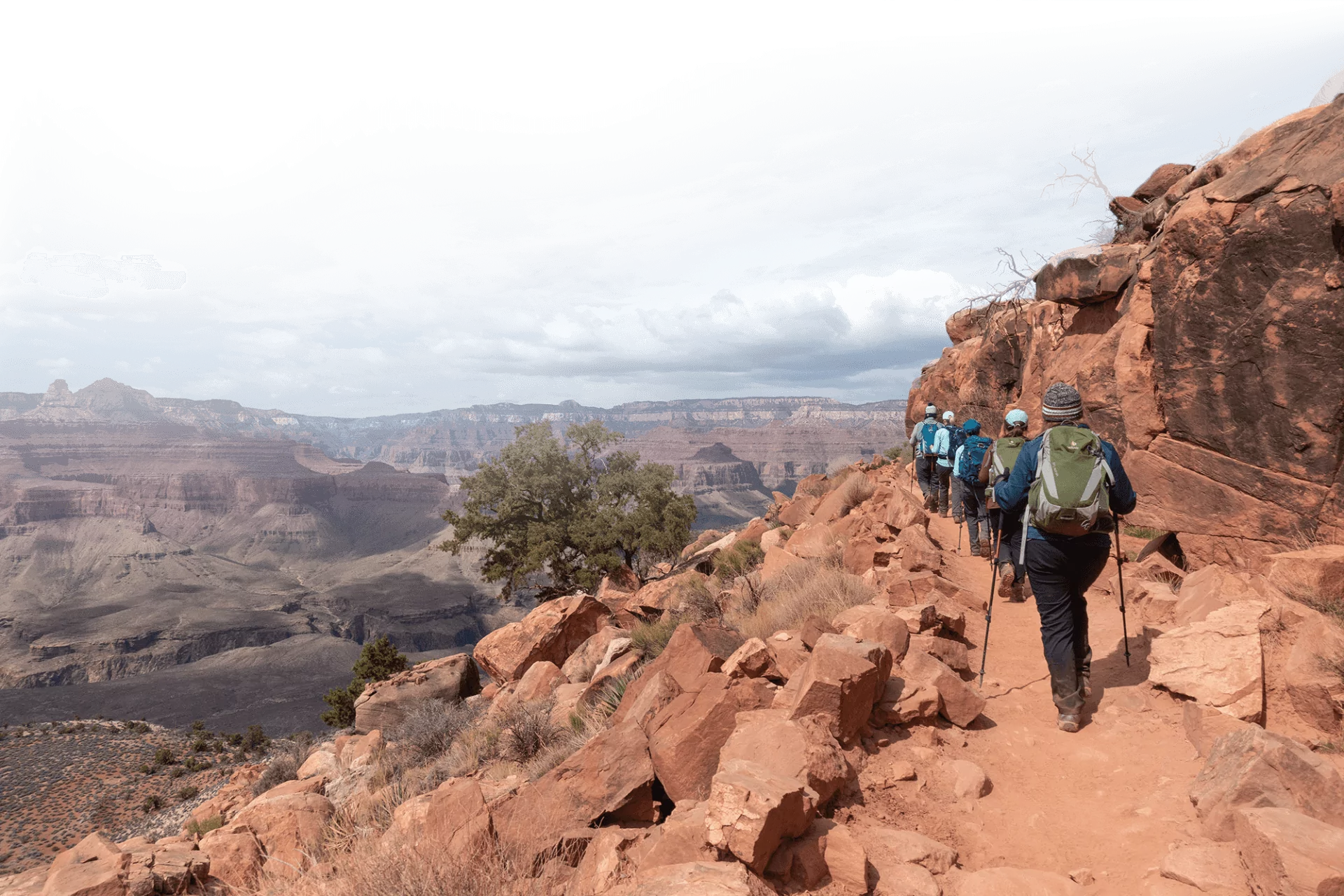Is Quicksand Real?
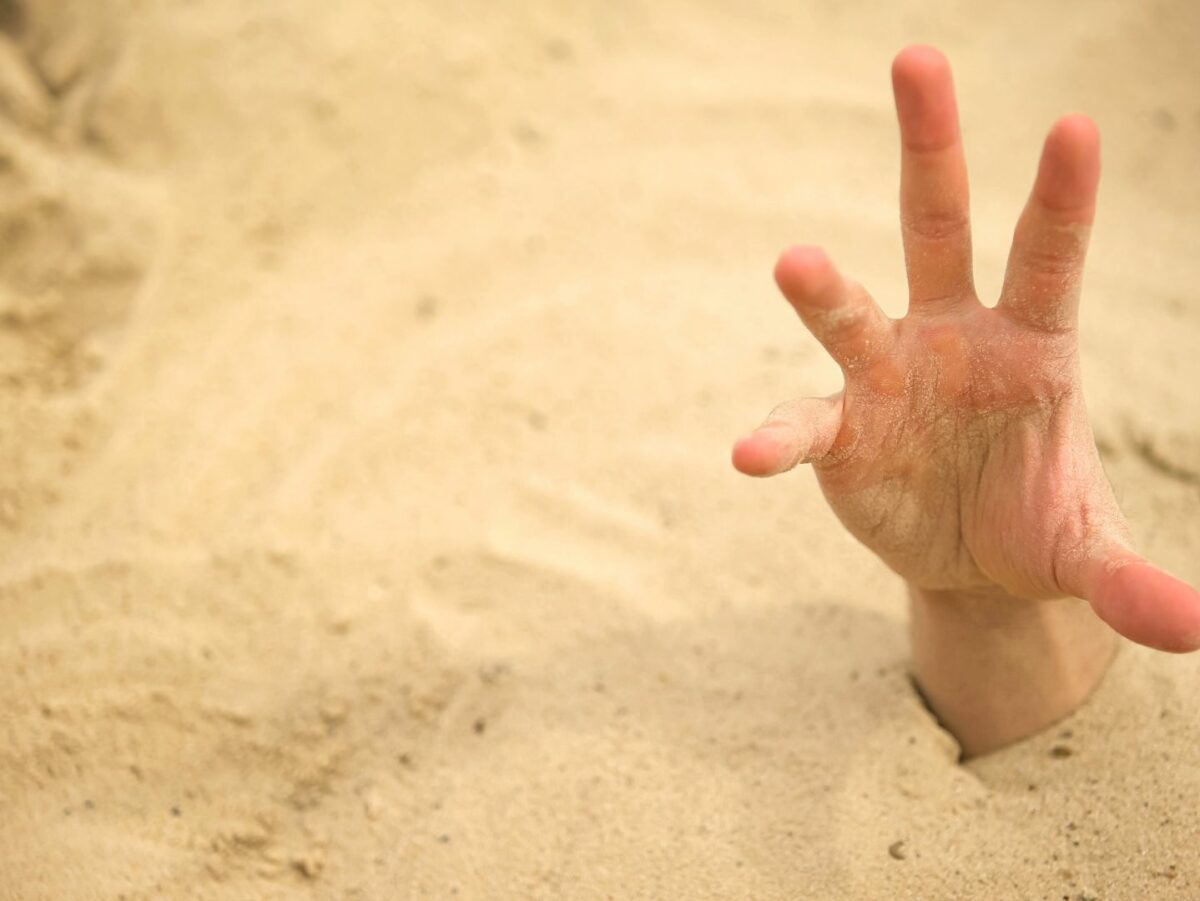
As a guide, I’m often asked “is quicksand real?” Those of us who go on adventures in the desert southwest, coastal areas, or really anywhere near water, may indeed face quicksand.
My first experience with quicksand was on a small island off of the North Carolina coast. Two friends and I paddle boarded across a sound to explore an abandoned island that once hosted a Boy Scout camp. As we reached the island, we docked our paddleboards, and came across one of the strangest natural features I have ever encountered since: columns of dried mud, with wetter mud in between.
Becca bravely stepped onto the columns first, bouncing on the hardened mud atop one column to another. In my memory, I hear them going “boing boing boing,” though that might just be my mind adding sound effects to their springy nature. “Cool!” I yelled and hopped across them too. Then, it was Scott’s turn. He took an excited hop only to end up… knee deep in the wet mud. Surprised, he struggled, sinking lower and lower until the substance reached his waist.
“Is quicksand real?” he shouted.
“Shoot, I guess it is!” I had thought quicksand, like anvils and pianos falling from the sky, was just a thing in movies and cartoons. Note to self: look up “is quicksand real?” later.
We told him to stop moving and each grabbed a paddle. With the two of us stationed on shore, we were able to pull him out. Scott, covered in mud, spent the rest of the day picking mud off of his skin and clothes. Now that I’m more experienced, I know that Scott was not going to sink further than his waist. But he was lucky to get out of the quicksand before the tide came in.
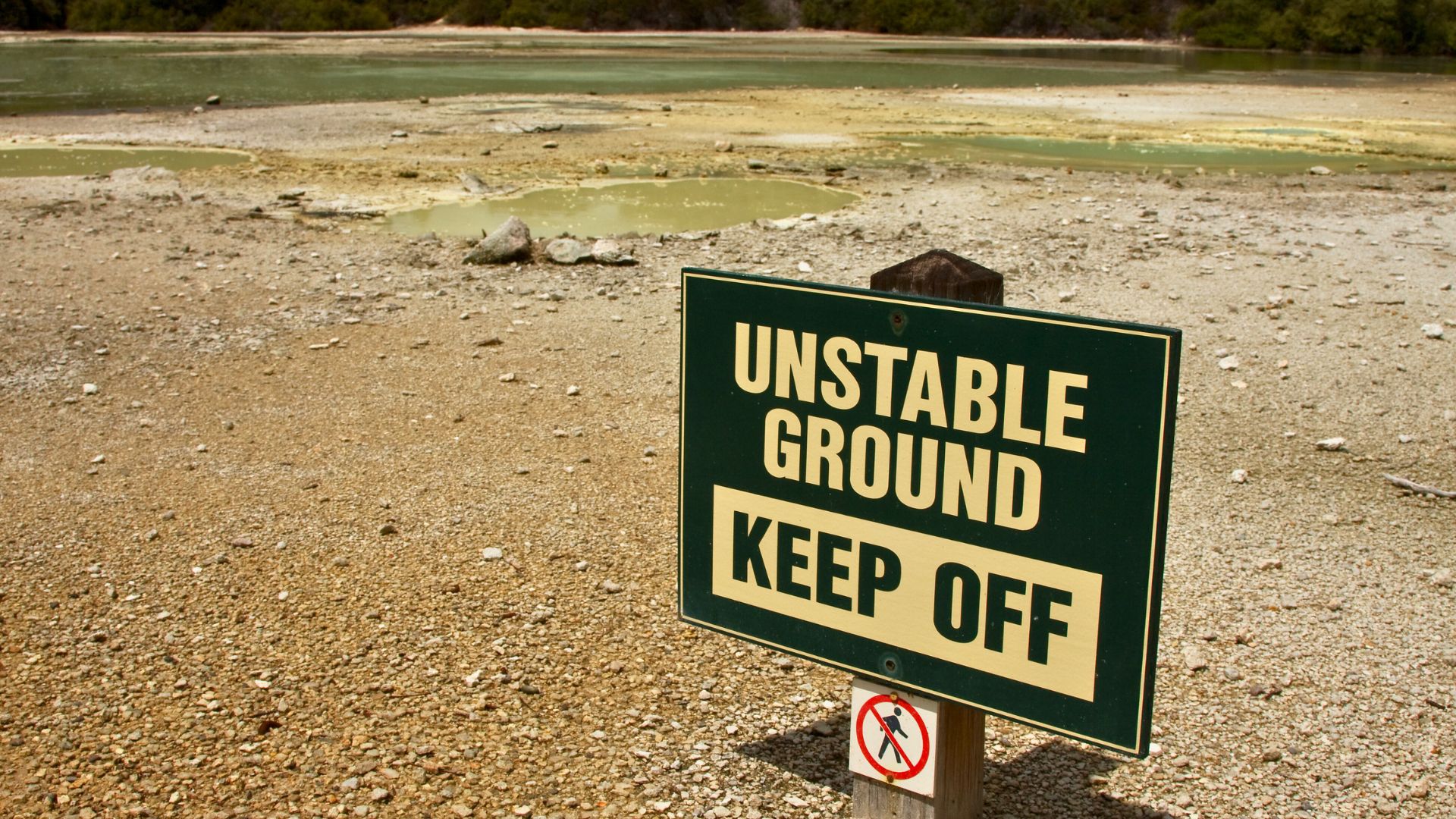
This is the only time I’ve ever seen someone get stuck in quicksand. Now, when I encounter quicksand it’s typically in the canyons of the desert southwest, such as backpacking through Coyote Gulch, a route outside of Escalante, Utah that follows a meandering stream through a sandstone canyon. I myself, and my guests, have misstepped and found ourselves knee deep in this colorful quicksand.
Aside from muddy boots and pant legs, this has been relatively inconsequential–we just step out. But it always raises the question: how dangerous is quicksand? Where is quicksand Found? What causes it? And how do you get out?
The Science of Quicksand
When people ask, “is quicksand real?” I often respond by explaining how it forms. Quicksand is fine-grained sand, silt, or clay that is saturated with water. It is caused by standing or upward-flowing water reducing the friction between particles, making sand more buoyant than the water. This upward flow of water can be from springs or earthquakes.
Quicksand is a non-Newtonian fluid, meaning its viscosity changes when stressed. Ever play with oobleck as a kid? Cornstarch plus water, of “oobleck,” is a great household example of a non-Newtonian fluid. Water is a great example of a Newtonian fluid–as you swim through a pool, the viscosity of water remains the same. In contrast, Oobleck hardens when it’s agitated, and softens when it’s motionless. Quicksand behaves similarly: stepping on it disrupts its structure, making it suddenly more liquid and causing an unexpected sinking effect.
Fortunately, quicksand also obeys the Archimedes Principle: objects sink only until the displaced fluid equals their weight. Because quicksand is denser (around 2 g/cm³) than the human body (about 1 g/cm³), a person will only sink to their waist unless they fall in headfirst.
read: Staying Safe in a Flash Flood
Where is Quicksand Found?
We can find quicksand anywhere water might interact with sand, silt, or clay. This includes riverbanks, lakes shores, canyons, beaches, springs, and marshes. Salt water is more likely to cause quicksand, as salt decreases the stability of some soils by reducing elastic forces between the grains. Regions of the US that see more quicksand include the coastal Southeast, and the desert Southwest.
Quicksand is tricky because it surprises you–it just looks like wet ground, and you often can’t tell what it is until you’re in it.
Is Quicksand Really Dangerous?
Despite its reputation, it is extremely unlikely to drown in quicksand. The Center for Disease Control (CDC), which reports on the leading causes of death for Americans, does not even track quicksand-related deaths. This is because it is a relatively inconsequential risk factor–so inconsequential it is not worth studying and reporting.
Still, a handful of unlucky victims have tragically drowned in quicksand. In 1997, two teens drowned in quicksand at a construction site in Chicago. In 2012, a 33 year-old woman in Antigua, Guatemala drowned in quicksand at the beach when tides rose. In 2015, a 50 year-old Texas man was found submerged face-down in the San Antonio River. But compared to the 40,000–45,000 yearly motor vehicle deaths in the U.S., quicksand fatalities are practically nonexistent.
The relatively low threat that quicksand poses can be explained by density. Again, quicksand, at an average density of 2g/cm³, is denser than the human body, around 1g/cm³. However, the human body is not evenly distributed in terms of density. Our trunks are less dense than our legs. Thus, unless you are anomalously dense, or you fall in head first, humans are very unlikely to be fully submerged in quicksand.
Most of the time, we can get out of quicksand just fine. If you do get stuck to your waist, quicksand can be as heavy as wet concrete. The biggest risk here is getting stuck combined with another risk factor. This could include drowning, if the tides are coming in or the area happens to be flooding, as well as exposure to extreme weather factors such as hypothermia or dehydration, or an attack from an animal.
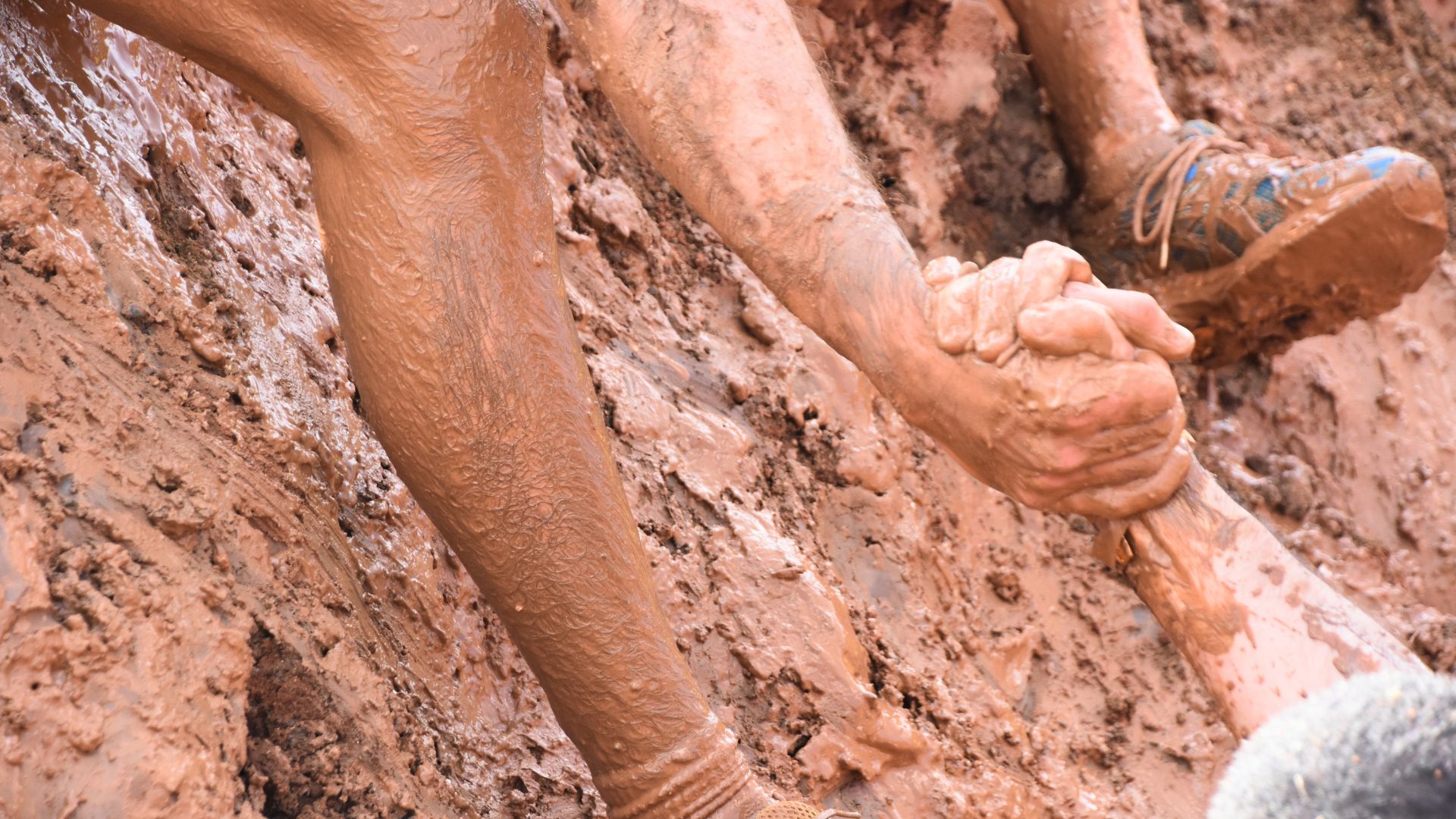
Escape Techniques
We’ve established that quicksand isn’t likely to pull you under leaving just your hat behind (like in the movies). But even sinking knee deep can be unnerving.
The first step to avoiding quicksand in prevention. I always recommend hiking with trekking poles anyway, but poles have an added benefit in quicksand prone areas. Prod the ground ahead with your trekking pole before each step to avoid unstable ground. Be especially cautious near riverbanks, especially in canyons or coastal areas.
But what do you do if you find yourself waist-deep in quicksand or your hiking buddy gets stuck, screaming “is quicksand real?” Below are some tips:
- Stay Calm – Avoid panicked movements, which will make you sink further.
- Drop Your Backpack – Lightening your load will help you float higher.
- Reintroduce Water – Move slowly to allow water to seep back in and loosen the sand.
- Lean Back – Increasing your surface area helps distribute your weight.
- Wiggle Your Legs – Move them in small circles to create space and slowly work your way out.
- Use Nearby Objects – If possible, grab onto something stable, like a tree root or a friend’s trekking pole, to help pull yourself free.
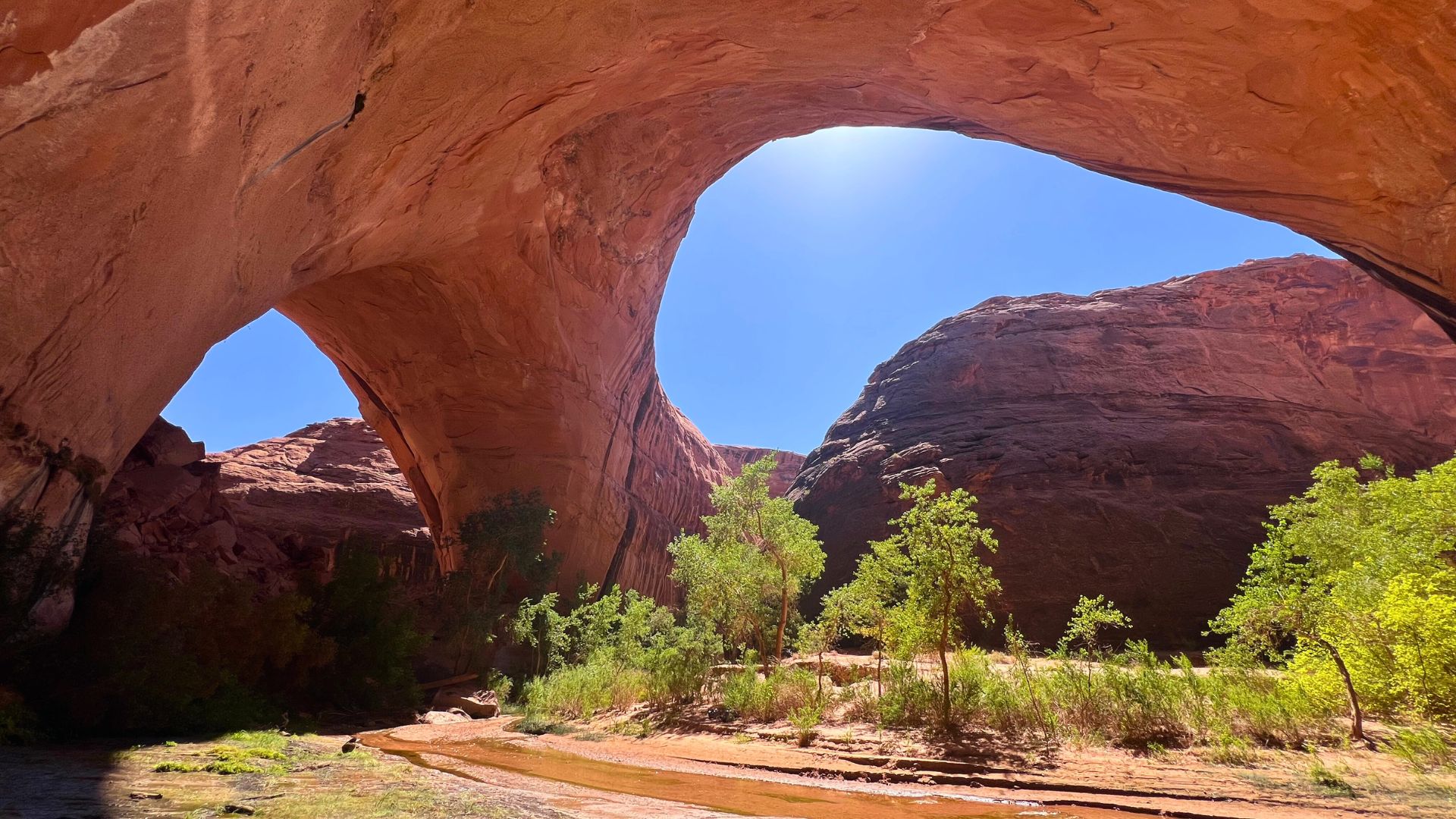
Is Quicksand Real? Yes, but it’s not out to get you
Quicksand, once a dramatic staple of adventure films, turns out to be more of a surprising inconvenience than a real danger. While it can certainly trap the unwary, understanding its science and how to escape minimizes its risks. Whether encountered on a coastal island, a desert trek, or along a riverbank, quicksand is more of a muddy nuisance than a deadly trap. So, while you probably won’t disappear into the earth like in the movies, it’s still good to know what to do if you ever find yourself unexpectedly sinking.
Stay calm, move carefully, and if asked “is quicksand real?” tell them yes, but it’s not out to get you.



